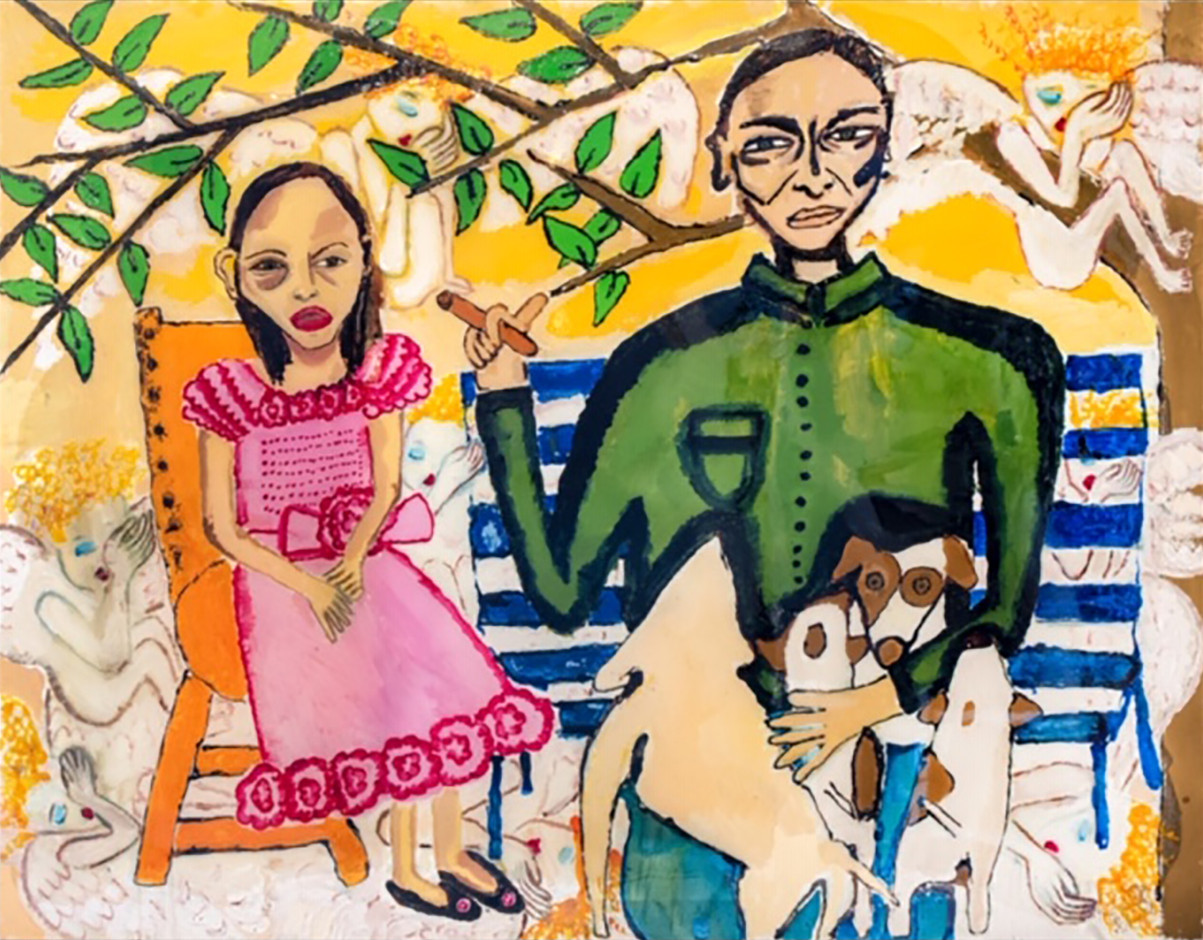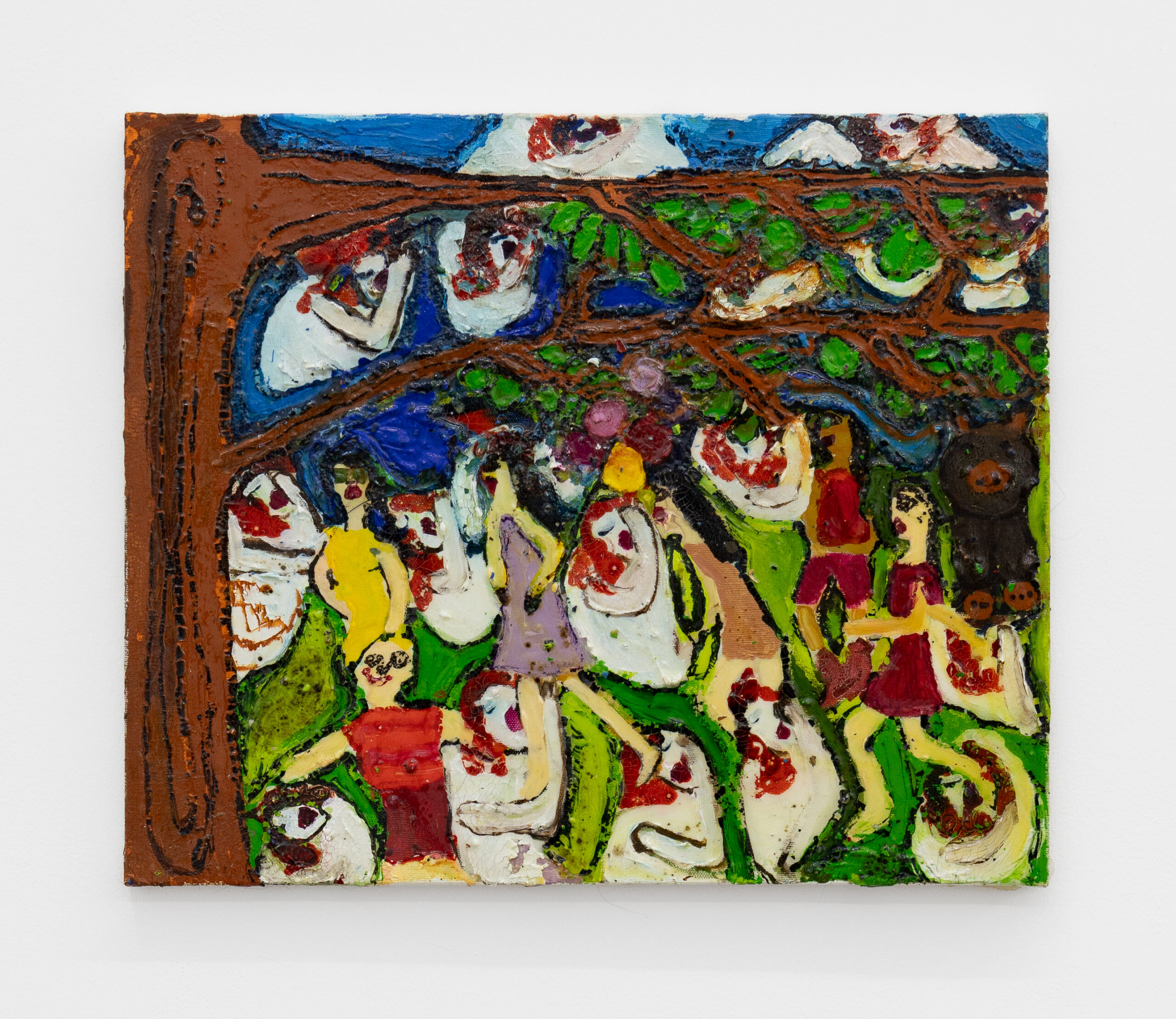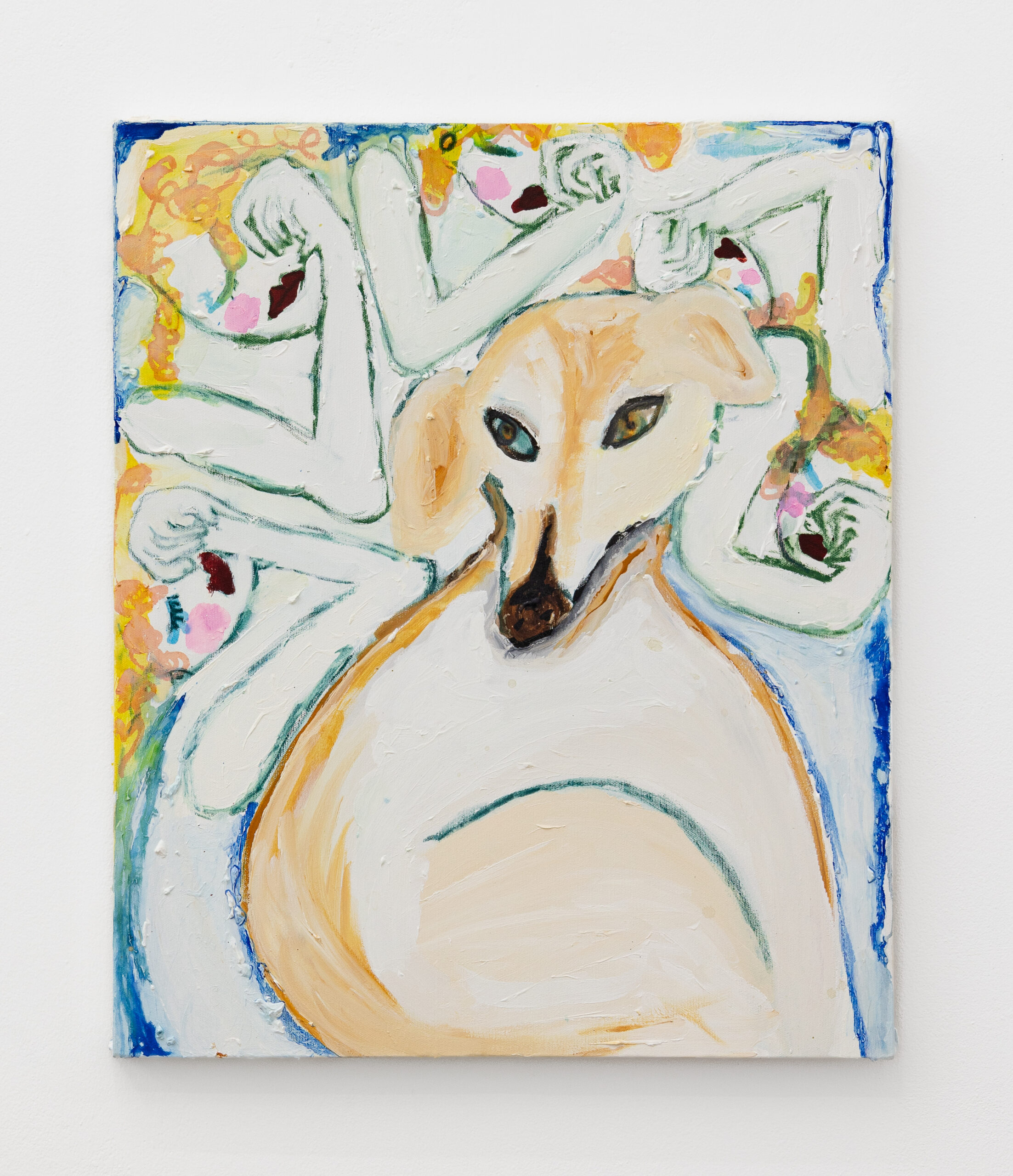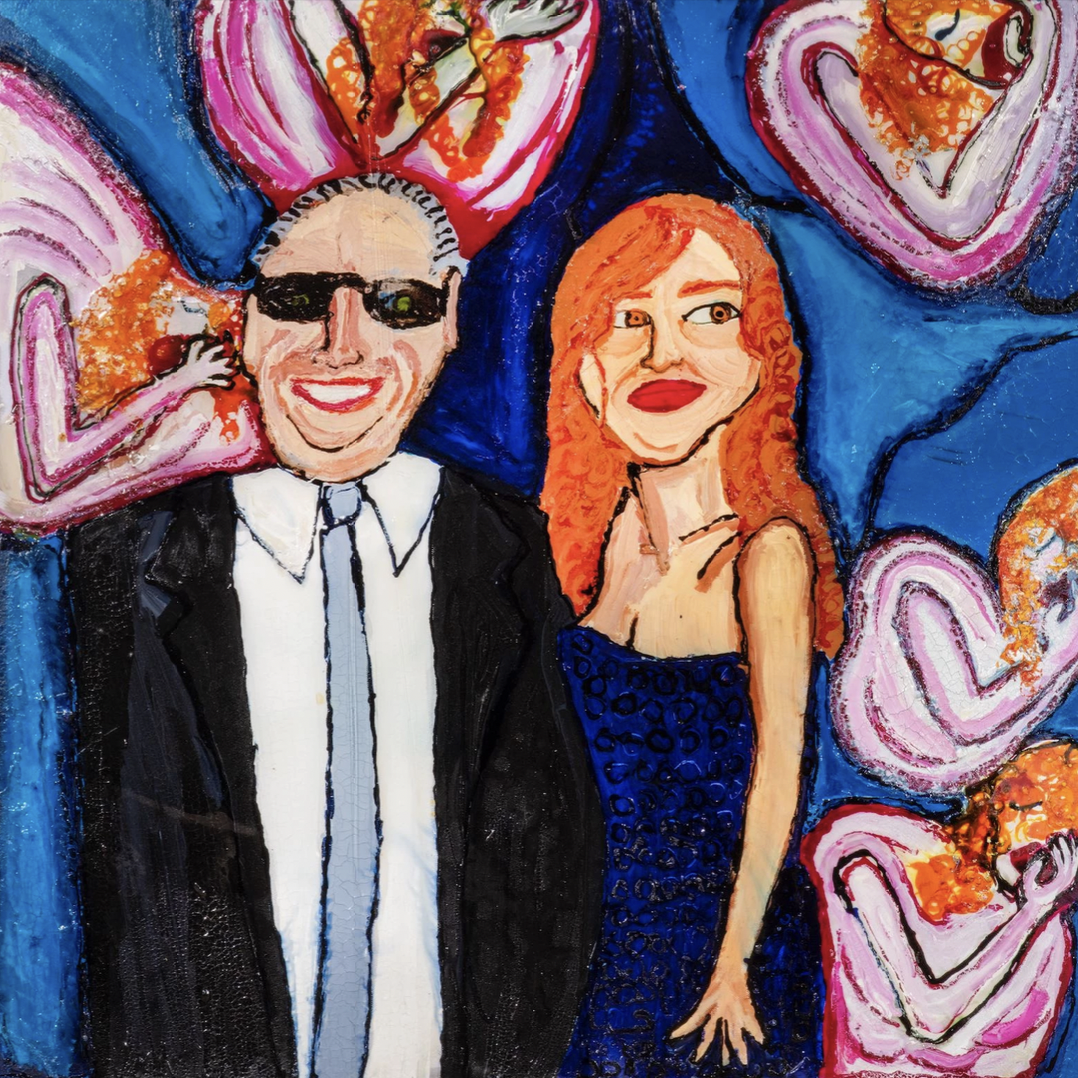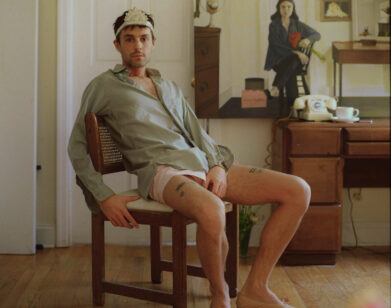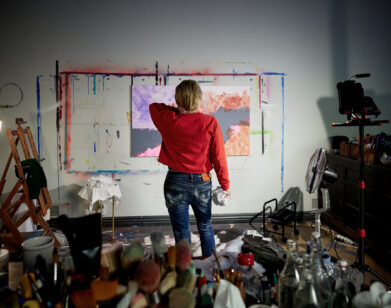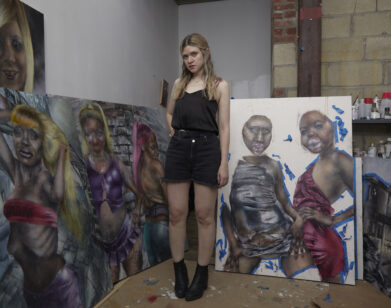ICON
How Paz de la Huerta Found Peace in Her Surrealist Paintings
I met Paz De La Huerta in person a few weeks ago, on New Years Eve in Paris, but we’d started messaging each other last summer after she received a bottle of my perfume from our mutual friend, the writer Sam Kashner. The perfume—Maggie the Cat is Alive, I’m Alive!—was inspired by Elizabeth Taylor’s role in Cat on a Hot Tin Roof. Unlike the women in Tennessee Williams’s universe, Elizabeth Taylor lived a long life and found her way amidst and despite chaos and violence. Similarly, de la Huerta managed to survive the horrific underbelly of Hollywood, and more. For the last couple of years, she’s been living in something like isolation: healing, creating art, and transmuting her unconscious onto canvas. Her paintings are something to behold. She’s revealing them for the first time ever, in a group show at gallery Ruttkowski;68 in Paris, which opened last weekend and runs until February 25th. She will also have a solo show there in June. There is nothing more gratifying than witnessing someone you adore begin to rewrite their own story; when the art they make also happens to be fantastic, well, that’s simply the icing on the cake. Last week, we got on a Zoom call to talk about angels, survival, and her dog, Carmelita.
———
MARISSA ZAPPAS: Hi, Paz. How are you? How are the puppies?
PAZ DE LA HUERTA: Hi. I’m good. I’m just getting all ready to go to Paris for the first opening and I’m on the farm with the animals. In my next series of paintings, I want to paint lots of animals, because that’s really what I’m inspired by right now.
ZAPPAS: It’s so amazing that those puppies were born outside your door on Saturday.
DE LA HUERTA: Yes, it’s very sweet. Two of the puppies died inside the mother’s womb. The birth was quite painful, but two puppies were born, so we have two little babies.
ZAPPAS: The birth of the puppies just reminded me of “mi alma” and how present that is in your life right now. That was the last word of the trailer in the film that you sent me. I feel so honored to do this interview with you as you introduce your paintings to the world, I think they’re so poignant and magnificent and psychedelic. I’ve never been moved to tears looking at a painting before. Actually, there was one time with a Picabia painting, but the other night I was just looking at your paintings and crying.
DE LA HUERTA: Thank you, angel.
ZAPPAS: I’m curious how this recurring theme of the Crying Angels came to you in your work?
DE LA HUERTA: Well, the first Crying Angel I painted was in Paris. More and more of the story of my life is coming out and I’m working on my memoir, but I was like a prisoner with my family. Painting and my art as an actress were always my ways of seeing more clearly. I did that painting of me and my father as a little girl. I have a black eye and I’m wearing a little dress. And I discovered a picture of a crying angel—I thought it was the most beautiful thing I ever saw, and it became the only thing I wanted to paint. Even when I was falsely incarcerated, even when I was left with nothing but a pencil and a piece of paper, all I could draw was Crying Angels. Now that I’m free of my family, and safe, I still incorporate them in all of my paintings. I was doing a portrait of my Aunt Corina, who was murdered, and I could have very easily had her same fate. They stole all her money like they were stealing mine. And then I started to paint the Crying Angels. But now their eyes are starting to open, I think.
ZAPPAS: Wow.
DE LA HUERTA: I think they’re really the deepest part of my soul. I guess they just feel like home to me. They’re really all I want to paint. I could paint them the rest of my life.
ZAPPAS: They seem to change a little bit in each picture. At your show in Paris you’ll be showing two paintings, correct? Both with Crying Angels, one with Carmelita in the Crying Angels.
DE LA HUERTA: I did a series of paintings called The Fairy Forest, because I lived in Los Angeles a long time ago. My family kept trying to put me in psychiatric wards to silence me. I was never crazy. And I kept running away to the ashram I was telling you about in San Jose.
ZAPPAS: San Jose!
DE LA HUERTA: Yes, San Jose, Mount Madonna. It was so beautiful. They called it “The Fairy Forest.” Lots of the people that lived at the ashram had children that went to school there, and they had a daycare. I would wake up in the morning and it was really misty, and I would see all these colors, all these little kids, and they were like fairies. And then, when I became kind of a prisoner again in 2018 and 2017, I painted a fairy forest that’s about this big, even bigger, huge. You can stand next to it. Francesco Clemente wrote an introduction and I thought it was pretty spot on. He knew how deeply sad I was. And he said, “Let it fall, Paz.”
ZAPPAS: “The gospel of Paz.”
DE LA HUERTA: I was manifesting an environment I feel safe in and creating happiness, which was very foreign to me for so long. There’s going to be one painting that’s the miniature fairy forest that I painted in 2018, then I did a new one of Carmelita, this beautiful dog, my angel that I rescued.
ZAPPAS: Tell me more about your relationship with Carmelita.
DE LA HUERTA: Well, my therapist, who passed, Michael Rebel, he wrote a book called Animal Angels and before he died. He healed me through talking, comparing everything to animals. I don’t like to say where I’m living now, because I don’t want anyone to know where I live. But I got to this country and I saw that it had the elements I needed to heal. It had the sea, it had the desert, and it had lots of animals, lots of stray cats and dogs everywhere. And I knew that art would save me too, as an actress, as a model, as a painter. So, I got a little apartment, and it was all god’s will, because I wouldn’t have met Carmelita, who was in a very bad neighborhood. I saw this beautiful white little creature. There were other stray dogs, but she chose me. I got her shots, I got her cleaned up. I cleaned her with my hands. I picked out every tick by myself. She was a reflection of me. She was not in the safest place. She was saying, “Help, help.” So, she saved my life and I saved hers. She’s outside my door right now.
ZAPPAS: Can I see her? She’s so majestic.
DE LA HUERTA: She’s magical.
ZAPPAS: My cat is meowing right now as we’re looking at Carmelita. Wow.
DE LA HUERTA: I’m an orphan, she’s an orphan. But now we have each other, so we’re not orphans anymore.
ZAPPAS: Orphans have a way of finding each other.
DE LA HUERTA: Are you an orphan?
ZAPPAS: I think spiritually I’m a little bit of an orphan. I’d say I’m a black sheep. Your work reminds me of a few different artists. It definitely reminds me a little bit of Goya. Who do you look up to, who inspires you?
DE LA HUERTA: Well, it’s funny, because Francesco Clemente is an old friend and he painted me a couple of times. When I was younger he did a beautiful portrait of me. I remember sitting for him and what an intense experience that was. He explained to me that the last thing he ever paints when he paints someone is their eyes. Now, when I do portraits of people in my paintings, when I paint the eyes, I’ve kind of taken on his lessons. So he’s an inspiration. And Goya, definitely. Being half-Spanish, I would spend hours at the Prado looking at Goya’s. The painting that has the craziest effect on me is Las Meninas by Velázquez in the Prado in Madrid. If you ever have a chance you see this painting and the story behind it… I literally feel like I have to faint.
ZAPPAS: Have you always painted since you were little?
DE LA HUERTA: Always, since I was a baby. I was being abused, and my subconscious found its voice through the arts. Long before I knew the truth about my life, my art was trying to save me.
ZAPPAS: I think Francesco Clemente wrote, “Your art is in a trance.” I think that’s why it’s so striking; it really reflects the unconscious in all its surrealism. That’s what makes it so poignant, and that’s what makes it psychedelic, too.
DE LA HUERTA: I’m very Catholic. And in that painting you told me you like, my mother had me operated on at 20 days old without anesthesia. So, that’s a portrait of me as a baby with all those wires in my body, being mutilated. Then I painted Mother Mary kind of replacing her, because I never got any love. So I’ve healed with Mother Mary, and she’s in lots of my art.
ZAPPAS: That painting is so amazing, How I replaced every memory of my evil mother with the Virgin Mary. I also love the portrait of Arielle Dombasle as The Star Card. I’m wondering if you can talk a little bit about that.
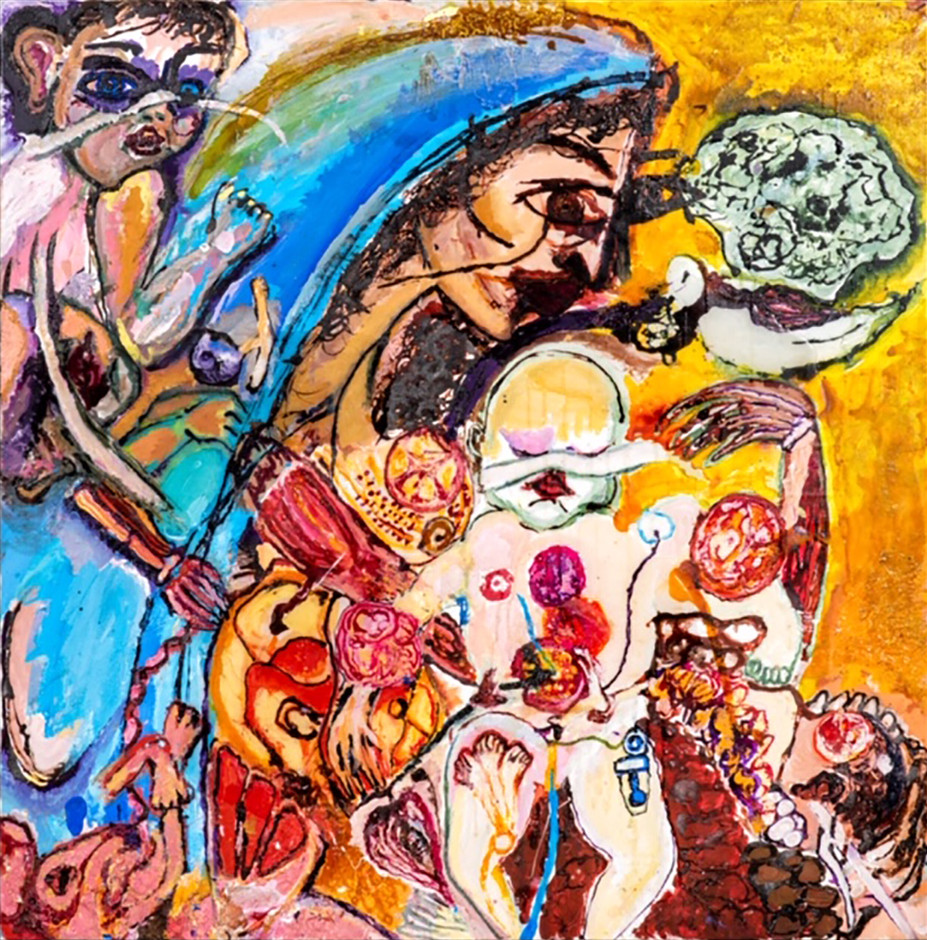
How I replaced every memory of my evil mother with the Virgin Mary, courtesy of the artist and Ruttkowski;68.
DE LA HUERTA: Yes, definitely. It is Arielle. A true star like Marilyn Monroe, who suffered all these tragedies. And you make these incredible perfumes. They’re so appropriate for us women. The star gives too much, and in the ancient Tarot, the L’étoile waters her garden so much that the flowers die. In this painting of Arielle, if you look at it on the bottom, the leaves are turning gray.
ZAPPAS: I’m obsessed with this painting. I also really love Me and my ol’ Man Jack and Five Crying Angels, which I assume is of Jack Nicholson.
DE LA HUERTA: Yes. That is one of the happiest memories of my life. Jack is a real friend, an old friend, and showing up with him to The Departed premiere and being his date, he always did his best to protect me. He made me promise to write a book about my life. He’s been a good friend, and I wanted to paint that moment. The number of angels I put into each painting is always significant, because I also practice the Afro-Brazilian religion called Orishas, and different numbers mean different things. Five is the Oshun, which is the sweet waters, and she’s the goddess of love, compassion, fertility. I never know how to finish a painting. It’s like really god speaking through me, so I don’t know when to say it’s done. I would buy this oil resin and pour it on top. It takes about seven days to dry, and they look like glass in person.
ZAPPAS: Wow. It’s always so hard to know when to end a piece of art that you’re working on. I feel like I could work on my perfume formulas forever.
DE LA HUERTA: I’m sure.
ZAPPAS: I’m always interested in the spiritual properties of the raw materials that I work with. So last night, I googled what the spiritual properties of osmanthus flowers are, and it said it’s used for courageous new beginnings.
DE LA HUERTA: Marissa, are going to do a Crying Angel perfume with osmanthus?
ZAPPAS: Of course. It smells like apricots and leather, but they are these small white flowers. They are not very commonly used in perfumery, but they are quite beautiful.
DE LA HUERTA: When I was shooting Enter the Void, I said to myself, “If I ever make a perfume, I would smell it in the streets of Aoyama. And then I met you, and it could come true.
ZAPPAS: Courageous new beginnings for both of us. For your solo show in June, how many of your paintings will be on display?
DE LA HUERTA: Kenny Schachter is curating it and he said as many as possible. I saved about 15 in Paris, including a portrait of myself I did when I was 14. There’s many more paintings I did in Spain that, if they weren’t sold, I’d like to get back. They tell my story. I had been with the director, Leos Carax, for many years, and that movie, Annette—I haven’t seen it, but it’s about me. In many of the paintings, I painted images of him and his daughter, Nastya. And there’s some paintings of me as a prisoner, and a lot of references to Tarot.
ZAPPAS: I just can’t wait to see how this new story of your life is reflected in your art, and how the crying angels will continue to shift and change and reflect the new direction you’re going in.
DE LA HUERTA: Yeah, they will evolve. Corina’s painting was the first one. Their eyes start to open, but her story is a very sad one. I hope, with my memoir, to be able to tell her story, because she suffered the same abuses that I suffered with my father, with my grandfather, and she never got to tell her story.
ZAPPAS: How is your memoir coming along?
DE LA HUERTA: I have an amazing co-writer, as you know. Sam Kashner, the best. And I’ve written many pages on my own. It will happen.
ZAPPAS: He told me that you don’t even need any help writing.
DE LA HUERTA: I’m honored. He’s going to help tell my story.
ZAPPAS: You’re already telling it. I also want to take a beat to talk about your movie. The trailer that you sent me was so moving, and I know that you have to raise $20,000 to finish it in Sintra. So, if anybody has $20,000 and wants to help contribute to Art with a capital A, please contact Paz. She needs to finish the movie she’s been working on for 13 years.
DE LA HUERTA: Yeah, maybe longer. I started this film as The Red Shoes, and then my life took a really crazy turn of events, but I kept filming. I always kept the same team. I have the same cinematographer, Frederic Fasano, and Johnny McNabb was producing it, but he passed. James Orlando from Bullet has saved all the footage. Out of 13 years, I edited only three minutes. Then, I ran away from Spain to L.A., got rid of this lawyer who my mother had hired to try to steal my [Harvey] Weinstein settlement, and I was homeless. And when I was homeless, I recorded the last eight minutes, which was me manifesting becoming Maria De La Paz again. And now, I can finish it. It was funny, I met Baz Luhrmann while I was homeless in L.A. and I showed him the first three minutes and he goes, “The next part is the truth. They took everything from you but your soul.”
ZAPPAS: I believe it will happen for you. One of my favorite lines from the trailer was, “My philosophy on art has always been that it unveils itself to you, not the other way around.”
DE LA HUERTA: Yes. I feel that way completely. My art has always been about healing for me. There’s one painting that’s in Spain right now, about when I couldn’t even walk because I was debilitated from the abuse I endured. And I painted Satan, the painting of Satan trying to steal the baby. Then, I realized what was going on and that I had to run away, and I did. I ran far, far away.


